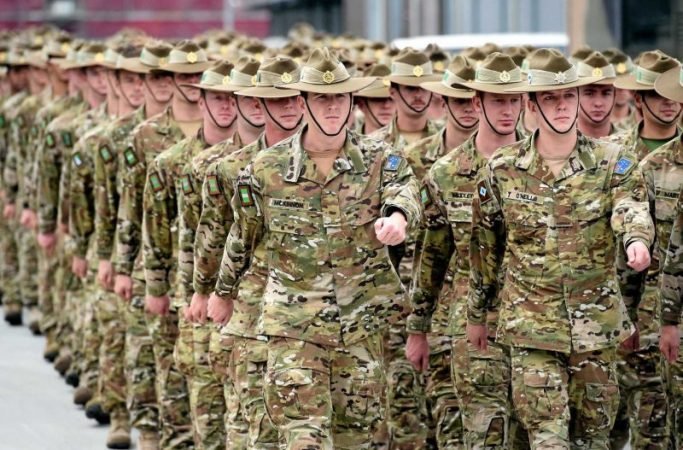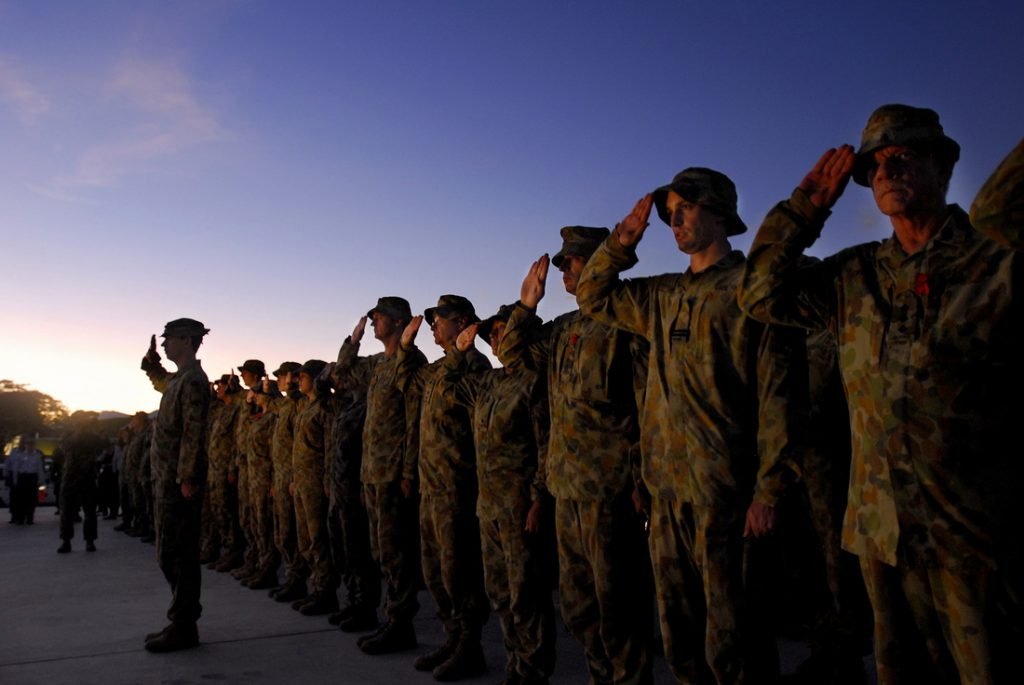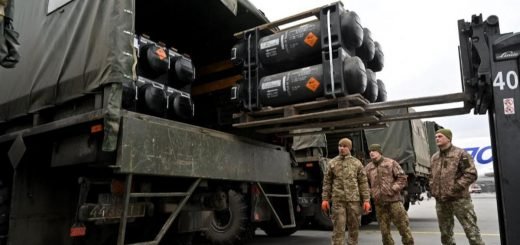Australian Defence Forces: An Assessment

The FORCE 2020 document was a vision document for Australian defence forces released in 2002 that aimed to look ahead at the challenges of the 21st century and prepare the ADF as a “force for good, a force to be reckoned with and a force to win”. This was a time when the ADF was involved in the “war on terror” and was dealing with the problem of terrorism. The Defence paper released in 2004, found congruency with this document where the use of ADF for a robust national maritime policy was deemed quintessential. The maritime domain is like oxygen for the Australians as 85% of the total population resides on the nations’ coast. The Australian coastline is almost 34,000 km long and boasts all major cities which makes ‘the littoral’ important for all trade and transport. Owing to its geography,99% of total Australian trade is conducted through the sea-lanes which makes it imperative for Australia to have a maritime strategy showing convergence between Air, Land and Water tactics. This importance reverberates in the defence white paper of 2014 which called for a maritime strategy which is successful in “deterring and defeating attacks against Australia and contributing to the security of our immediate neighbourhood and the wider region”.
There are three elements of maritime policies; viz, sea denial, sea assertion or sea control and power projection. Given the huge economic and strategic interests in the marine, experts say that Australia has a sea denial strategy which aims at-
- Securing its sea lines of communication (SLOC) for trade and transport
- Denying access to forward bases to adversaries
- Net Security deterrent for itself and the neighbourhood
- Diplomacy through Military Exercises with other nations
It is to note here that the use of ADF and joint coordination between its branches is a necessity to conduct the maritime policy given the large coastline and the requirement to manage it. In the present world the defence forces not just used for conventional war-like purposes but are widely used for non-conventional purposes too; for example, the use of Helicopters and frigates to fight the devastating forest fires.

Old Institutions and new realities
Australia being a British Colony fought in the second world war and emerging victorious after the surrender of Japan. In 1952 Australia, New Zealand aligned with the US and signed the Australia-New Zealand and US security pact (ANZUS) due to which these island nations have managed to grow fearlessly under the American Defence umbrella. But today the picture is completely different, the world is no longer dominated by the unilateral actions of the US, rather a distorted and more complex one, dominated by multiple power centres. The South China Sea dispute was just an example to show that the oceans have once again become a contentious issue which nations like Australia will clearly reflect about. A new age has begun with the revisionist policies of America under President Trump. Foreign policy has become more transactional and old institutions have been questioned. This has been clearly the result of a rising China which has emerged as a separate pole and replacement for the US. China has used its economic might to spread its tentacles deep into the global structures and challenged the existing world order. Viewing the PRC as a “revisionist power”, the 2018 US National Defence Strategy argued that “We are facing increased global disorder, characterized by a decline in the long-standing rules-based international order”.
China has more strongly displayed itself as a threat to the international rules-based order by muscle-flexing in the South China Sea and at the line of control with the Indian border. This is a time when the world is battling with the coronavirus pandemic and has diverted all its resources in fighting the healthcare emergency. Even though Australian island is far away, this irredentist behaviour of china resonates in the minds of legislatures and they also feel the shift in the balance of power-driven by an urge to change the status quo, control the sea lanes, indulge in ‘dept trap politics’ and moreover being a threat to the international liberal order which Australia has always supported. As a result of this, we have seen a reincarnation of an informal grouping between India, Japan, the US and Australia called the QUAD. Though being in its infant stage, the QUAD symbolizes the like-mindedness of these countries to converge at a common goal of protecting the freedom of navigation in the open seas and also balance the shift in power. The QUAD Grouping will become a military body once Australia joins the existing annual Malabar Exercise which will give it a more experienced platform for sharing technology capacity and build its own defence industry.

Plan for 21st Century
Since the fall of Singapore and the end of world war, Australia has taken significant steps to address its maritime vulnerabilities though the alliance with America has been a keystone in the Australian defence and maritime policy. Australia has introduced the Pacific Step-Up strategy in 2016 by which it is going to provide 1.4 Billion dollars in development assistance to the pacific in 2019-20 accompanied by a 2 Billion dollars Australian Infrastructure Financing Facility for the Pacific and the Coral Sea Cable System which aims deliver high-bandwidth communication network and infrastructure to the Papua New Guinea and the Solomon Islands. The commitment to the pacific islands is best expressed by Ewen McDonald, who is the Head of the Office of the Pacific; “we have always engaged- and always will engage- in the pacific because we are part of the Pacific, and with the best interests of our region at heart.”
But according to experts, the Best initiative undertaken by the ADF is indeed the Indo-Pacific endeavour as part of its overall maritime diplomacy. Starting in 2017, the ADF has carried out a series of engagement activities and military exercises with nations like Sri Lanka, India, Singapore, Malaysia, Thailand and Vietnam. The IPE is aimed at “strengthening relationships through exercise” and “increase interoperability” between the participating nations. It is to notice here that the engagement the ADF has shown is special in itself. Four nations, i.e.; Singapore, Malaysia, Thailand and Vietnam are involved in the South China Sea Dispute and India has a border dispute with the Peoples Republic since their war in 1962. This clearly sends a signal to China that the Australian policymakers are aware of the expansionist nature of china and are ready to counter it in their own way.
The maritime policy extends to the middle east where Australia in January 2020 sent its naval ship The HMAS Toowoomba- an ANJAC- class frigate along with deployment of the P-8A Poseidon maritime surveillance aircraft for a six-month deployment in the Middle East. It was a part of the United States-led International Maritime Security Construct (IMSC). The role of the IMSC was to promote freedom of navigation and anti-piracy operations in the middle east. Though not known to many but the ADF has maintained its presence in the Middle East through an initiative by the US-led 33-nations Combined maritime forces.

Conclusion
Australia has for the first time announced that it is going to spend $180 Billion on its military capacity over the next decade. Speaking at the Australian Defence Academy, Canberra, PM Scott Morrison spoke about the threat his country faced and how his country has to prepare for a “poorer, more dangerous and a more disorderly world”. This is in response to the 2016 Defence white paper which aimed to modernise the ADF, especially the Royal Navy, providing it with twelve new submarines and nine frigates and patrol vessels. This is definitely one of the biggest Defence infrastructure overhaul process taken by any middle power. The investment announced by the Australian PM will include acquiring long-range Anti-Ship Missile (LRSAM) from the US and development of Hypersonic weapons. This is essential as several experts have raised concerns regarding the attack capability of Australian Naval and Air Forces.
The time is perfect for Australia to shape its internal and external policies so that it can emerge as a protector of the liberal order which it has fought for since the world war. The rising tension between the US and China has created a fracture in the old international order and a multipolar world is being created where “the risk of miscalculation and even conflict is heightening”. Australia will surely find its policies concurring with nations who uphold international values of globalisation and promote the United Nations Convention on the Law of the Sea.



















